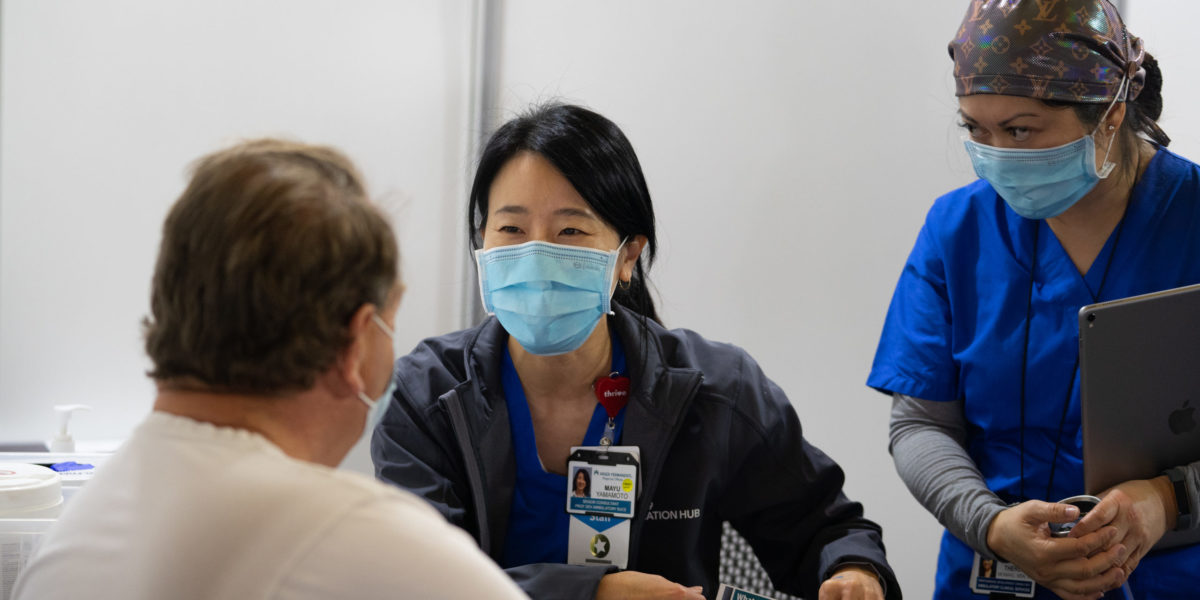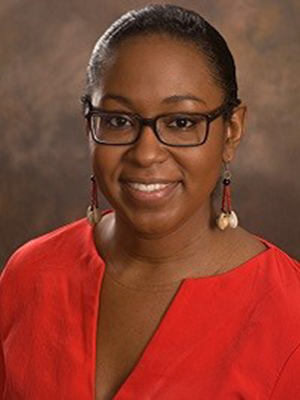By Ellen Lawton, JD , Senior Fellow, Health Begins and Bethany Hamilton, JD Co-Director, National Center for Medical-Legal Partnership at the George Washington University
Social ills, such as substandard housing and food insecurity, fuel sicknesses that our health care system must then address. What we don’t often consider—but should—is that many of these social and structural problems are also legal problems. As such, they may have legal solutions.
Health care workers (and health care budgets) feel the brunt of these injustices. When there isn’t enough safe affordable housing and when sanitary codes are unenforced, doctors treat people for the injuries and health conditions like asthma that ensue. When decades of redlining and structural disinvestments in communities leave people living in food deserts without access to healthy food, or their SNAP applications are wrongfully denied, providers must help patients manage related health problems, such as diabetes. Yet health care can’t correct those injustices on its own.
Now more than ever, we are asking the health care delivery system to be in the business of preventing illness. That’s a tall order when so much of what makes people sick are underenforced laws and policies, underfunded public programs, and ill-conceived and/or racist public policies that are outside the scope of what the fee-for-service health care industry and health care professionals are trained to do. One tool to bring about better health and wellness for individuals is to embed specialists on the health care team who are equipped to both advocate on behalf of patients and help change policies that create these structural problems in the first place.
This approach is called medical-legal partnership (MLP), and over the last 20 years, more than 450 hospitals and health centers have formed such partnerships, which embed legal aid lawyers in health care settings to tackle complex health-related legal needs. In May 2021, Kaiser Permanente, working with the National Center on Medical-Legal Partnership (NCMLP) at the George Washington University and HealthBegins, became the first large, private integrated health system to invest in MLPs. This initiative will help address individual patients’ legal problems that affect their health and elevate awareness of how health and the law can intertwine to make our communities more just, and healthier, overall.
From Patients to Policy: Four Ways Medical-Legal Partnerships Address Health Equity
These MLP programs address social and structural drivers of health in four ways, starting with interventions on behalf of individual patients and building toward change at the broadest societal level.
- Health care providers refer patients for direct legal assistance.
Lawyers can work with renters and landlords to help prevent housing evictions, keep the lights and heat turned on, appeal denials of food and insurance benefits, and help patients with a variety of other urgent social needs. When they do, patients report less stress and improved mental health, are more likely to take their medications as prescribed, and have improved health outcomes. - The existing health care workforce builds critical knowledge, skills, and capacity around social drivers of health and addresses structural and systemic barriers to health and well-being. COVID-19 is exacerbating almost all of the challenges patients face—from safe, affording housing to stable income. MLPs help equip health care teams and their patients with better tools, knowledge, and strategies to address complicated questions of eviction threats, unemployment eligibility, discrimination due to COVID-19 status, and other problems, now and in the future.
- Health care clinics leverage legal expertise to shape clinical practices and inform clinic-wide solutions, helping address many patients’ needs without a referral to the lawyer. For example, MLP teams develop letter templates that help clinicians quickly support patients’ requests for reasonable accommodations at work and requests to prevent utilities from being shut off. In some MLPs, legal aid lawyers sit on clinic and operations committees and use their legal expertise to help shape the health clinic’s policies on issues such as interpersonal violence, abuse reporting, and ensuring that screening and intervention processes are less traumatic and more empowering for patients.
- Working together, the health care and legal teams at MLPs detect patterns in patients’ needs that reveal opportunities to advance regulatory, administrative, and legislative policy solutions for whole communities. One mother’s medical visit to a Cincinnati Children’s Hospital Medical Center pediatrician with her one-month-old child revealed systemic barriers that made it difficult for women to enroll newborns in benefits. The clinic referred her to a paralegal of the Cincinnati Children’s medical-legal partnership. The MLP team worked with the local agency that administers food benefits to eliminate administrative barriers for mothers trying to enroll their newborns in benefits. The results? New procedures were implemented allowing hospital case managers to send birth records directly to the agency, which was then able to help hundreds of families enroll their newborns without delay.
Going Upstream: Policy Work in Action
Downstream legal interventions—made possible by the unified voices of the legal and health care teams—reveal the need for upstream policy and and systems strategies. In the best-case scenario, they prevent problems from occurring or becoming acute while also advancing upstream approaches to promote health equity.
The strategies that MLPs use to change policies vary greatly and depend on the situation, policy, and stakeholders involved. Strategies include: using data and stories to educate decision makers about the effects of a policy via informal conversations or by providing written or oral testimony; meeting with agencies to propose changes to application requirements and procedures for benefits; convening community stakeholders and decision makers; and challenging laws in court. For example, after seeing many patients with lead poisoning who were prohibited from moving to a new home and still maintain their federal housing assistance, Erie Family Health Centers in Chicago and their MLP legal partners, Loyola University Chicago School of Law and Legal Aid Foundation of Chicago, built a multi-state coalition that got the U.S. Department of Housing and Urban Development to update its federal lead regulations.
A Growing Movement and Financing Pathways
In addition to support for the delivery of National Training and Technical Assistance, Kaiser Permanente’s recent investment will also support capacity building for 5 legal aid partners across Kaiser Permanente’s footprint to develop new MLPs and enhance existing programs that focus specifically on addressing housing stability and eviction prevention. Through this investment, HealthBegins and NCMLP will help clinical and legal partners prioritize health equity and action at the individual, health system, and community levels.
In addition to investments from health systems, government is increasingly recognizing the value of embedding legal services within health care. For example:
- In 2014, the Health Resources and Services Administration designated legal services as an “enabling service,” meaning that health centers can use federal dollars to pay for on-site legal assistance for patients.
- In at least 7 states, funding for legal services is included in a Medicaid managed care contract or other value-based payment arrangement or innovative delivery system reform model, such as the Delivery System Reform Incentive Payment (DSRIP) Program or Medicaid §1115 waiver.
- Some state-administered federal block grants can be tapped by MLPs, like the Substance Abuse and Mental Health Block Grants and Opioid State Targeted Response Grants from SAMHSA.
- State and local public health funding streams that support health centers and other public health infrastructure have increasingly included legal services as part of building strong public health teams. Both Monterey and Santa Clara counties in California have invested in MLP programs.
- In August of this year, the Elder Justice Reauthorization and Modernization Act of 2021 was introduced in the House of Representatives to better protect vulnerable seniors and people with disabilities. The bill includes $500 million to link health care to legal services and MLPs.
If we are going to do more to prevent illness then we must be honest about where poor health originates, and we need to equip health care teams with tools and partners to treat the problems they identify. Most importantly, we should consider the health of individuals and our communities in every conversation and every policy about housing, education, and food. Medical and legal expertise, joined in partnership, are one of the most powerful means we have to do that.


